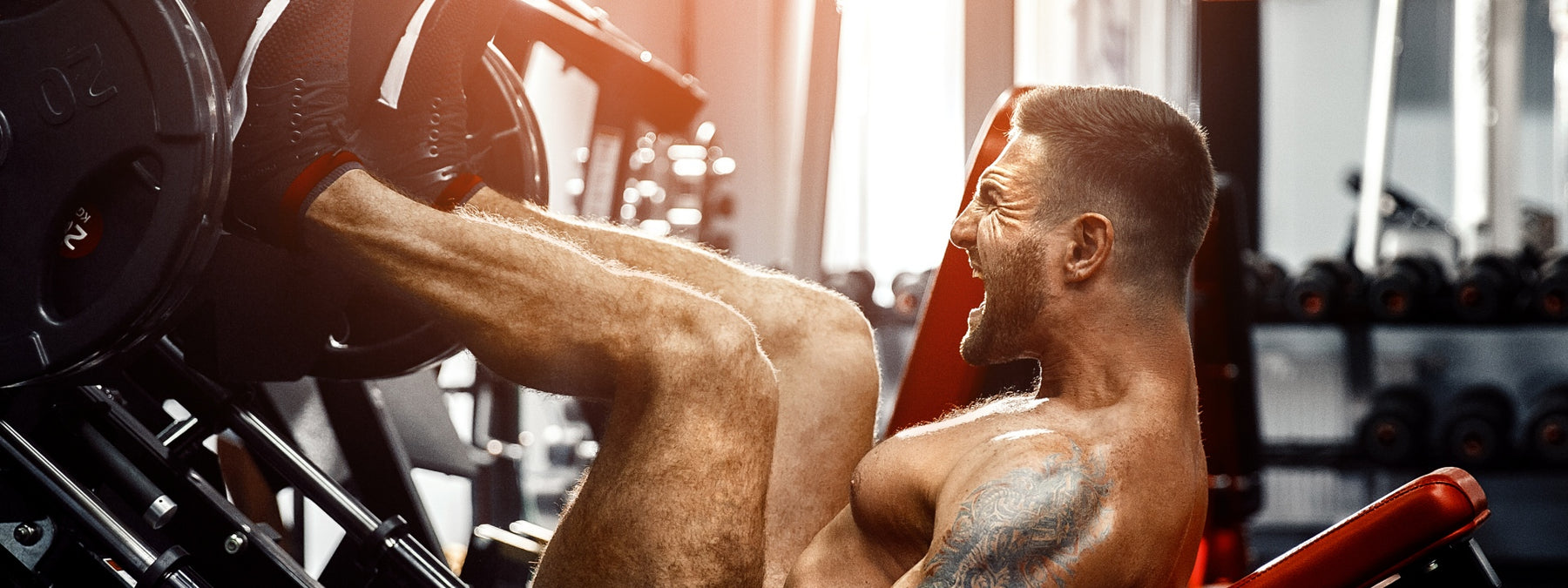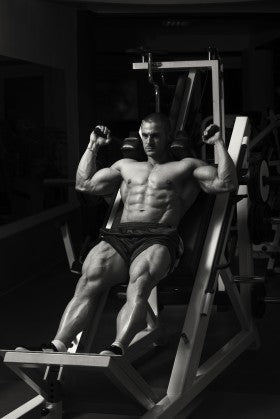
The 18 Minute Minimalist Superset Workout Routine
A lot of people are put off by the time and commitment it takes to work out. I was asked to address this topic by several people, including:
I'm a big science and programming fan. I wouldn't feel right putting out any old pap, but getting efficient stimulus in the majority of muscle groups takes time. Time is exactly what these people don't have. Not only that, but I set an unofficial target of 45 minutes to have everything done. I also limited training to no more than 3 days a week.
Push-Pull-Legs? This would take 5-6 sessions to hit my target, so hardly an option.
Upper-Lower? Getting there, but one would need to train 3-4 times a week.
Full Body? This could hit all the muscle groups in 2-3 days a week. A clear winner on frequency.
The issue here is getting every body-part done in one session is difficult without turning it into a 2-hour marathon. I went with this but had to employ some very clever techniques to get it to function.
How have we done this? Supersets.
Example from the routine:

Another potential difficulty is balancing out the program's cross-over volume (how one movement hits the same muscles as another) for efficient growth. For example, we used seated machine rows as this would allow back, bicep and some rear delt activation to occur.
When you're fatigued, your strength drops. Anything under 10 reps per set would require an extra set (as opposed to 3 sets) to reach over 30 reps total. Anything much higher, and you might not hit the required intensity because of fatigue.
Luckily, 10 reps hit most data points and have a nice buffer as you fatigue; to keep you in the sweeter spot. [3]
Note: RPE stands for rate of perceived exertion. A 10 RPE would mean the last rep is close to failure.
2) Effects of different volume-equated resistance training loading strategies on muscular adaptations in well-trained men. Schoenfeld BJ1, Ratamess NA, Peterson MD, Contreras B, Sonmez GT, Alvar BA.
3) The influence of frequency, intensity, volume and mode of strength training on whole muscle cross-sectional area in humans. Wernbom M1, Augustsson J, Thomeé R.
4) Acute effect on power output of alternating an agonist and antagonist muscle exercise during complex training. Baker D1, Newton RU.
- People with busy family lives
- People on holiday
- High-end business entrepreneurs who cannot afford to constantly chase personal records at the gym
I'm a big science and programming fan. I wouldn't feel right putting out any old pap, but getting efficient stimulus in the majority of muscle groups takes time. Time is exactly what these people don't have. Not only that, but I set an unofficial target of 45 minutes to have everything done. I also limited training to no more than 3 days a week.
What does the science say?
Frequency per body part should be high: around 2-3 times a week. Volume should be anywhere from 30-80 reps per body-part. Intensity should be higher than 65% of 1 RM, which is around 15 reps to failure.- Body Part Frequency - 2-3x a week
- Volume - 30-80 reps per body part
- Intensity - 65% of 1RM, or greater
What split is the best option?
Body-part split? A short session would not meet the outlined frequency goals, even if one went to the gym 7 days a week.Push-Pull-Legs? This would take 5-6 sessions to hit my target, so hardly an option.
Upper-Lower? Getting there, but one would need to train 3-4 times a week.
Full Body? This could hit all the muscle groups in 2-3 days a week. A clear winner on frequency.
The issue here is getting every body-part done in one session is difficult without turning it into a 2-hour marathon. I went with this but had to employ some very clever techniques to get it to function.
How have we done this? Supersets.
What is a superset?
A superset is a form of strength training proven in science and the real world in which you move from one exercise to the next without a rest or break. [4]Example from the routine:
- Leg Press - 10 reps
- Ham curl - 10 reps
- Then repeat this cycle 2 more times with no rest in between.

A superset is a form of strength training proven in science and the real world in which you move from one exercise to the next without a rest or break.
Possible dangers of supersets
Doing complex movements like the barbell squat under high fatigue can be dangerous. I based this program primarily on machines. don't listen to the myths: machines work as long as you use progressive overload. Even Dorian Yates used machines from time to time.Selective use of compound movements
Compound exercises use multiple muscles at the same time. This renders their use a no-brainer for the majority of the routine. The hard part is selecting common machines whilst not missing any major muscles out.Another potential difficulty is balancing out the program's cross-over volume (how one movement hits the same muscles as another) for efficient growth. For example, we used seated machine rows as this would allow back, bicep and some rear delt activation to occur.
Rep range choice
I wanted at least 30 reps per body-part and enough intensity to match the scientific data on growth. The issue is, as a trainee progresses they may need more intensity.When you're fatigued, your strength drops. Anything under 10 reps per set would require an extra set (as opposed to 3 sets) to reach over 30 reps total. Anything much higher, and you might not hit the required intensity because of fatigue.
Luckily, 10 reps hit most data points and have a nice buffer as you fatigue; to keep you in the sweeter spot. [3]
| 18 Minute Superset Workout | |||||
|---|---|---|---|---|---|
| Fullbody Training | |||||
| Exercise | Sets x Reps | RPE | |||
| Superset #1 - Leg Press and Leg Curl | 3 x 10 | 8/9, 8/9, 10 | |||
| Superset #2 - Machine Row and Machine Bench | 3 x 10 | 8/9, 8/9, 10 | |||
| Superset #3 - Side Laterals (DB or Cable) and Weighted Cable Crunch | 3 x 10 | 8/9, 8/9, 10 | |||
| Superset #4 - Pull Downs and Machine Shoulder Press | 3 x 10 | 8/9, 8/9, 10 | |||
Note: RPE stands for rate of perceived exertion. A 10 RPE would mean the last rep is close to failure.
Word of warning
The first sets (moves A&B) should be 2 reps from failure. don't go too crazy, and if need be, only go to failure on the last set per move. If you go to failure on the first 1-2 sets, the chances are your intensity will drop due to peaking too early and you will have to drop the weight more.The result
A routine that can be done in less than 20 minutes in a free gym (2-3 days a week). I have personally done a session in less than 16 minutes, but most with a little break between sets or not super setting will take 30-60 minutes.References
1) The effect of inter-set rest intervals on resistance exercise-induced muscle hypertrophy. Henselmans M1, Schoenfeld BJ.2) Effects of different volume-equated resistance training loading strategies on muscular adaptations in well-trained men. Schoenfeld BJ1, Ratamess NA, Peterson MD, Contreras B, Sonmez GT, Alvar BA.
3) The influence of frequency, intensity, volume and mode of strength training on whole muscle cross-sectional area in humans. Wernbom M1, Augustsson J, Thomeé R.
4) Acute effect on power output of alternating an agonist and antagonist muscle exercise during complex training. Baker D1, Newton RU.


Leave a comment